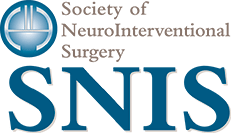By Donald F. Frei, M.D.
When it comes to stroke, many people have heard the phrase “time is brain,” meaning fast action is necessary to lower the chances of disability or death.
Because of this understanding, people who experience a severe stroke are taken to a hospital that is close by. In theory, this is a good thing, because we know that time is precious when it comes to maladies of the brain. However, those of us who have spent our careers specializing in neuroendovascular care know that, as counterintuitive as it may sound, going to a hospital that is farther than the closest facility could actually be the lifesaving choice for a patient.
In communities across the country, Level 1 stroke centers are standing by to treat the most complex and dangerous kind of stroke known as an ELVO, or emergent large vessel occlusion. These centers are equipped to treat all types of stroke and do so on a regular basis. They have carefully organized and expertly trained care teams that can get a patient lifesaving care in minutes, saving precious time and brain cells.
Severe stroke patients have the best chance to not only survive a stroke but fully recover when their first stop is a high-volume, Level 1 stroke center.
New research reinforces this idea. Compared to low-volume centers, high-volume stroke centers have:
- Lower mortality rates (1% at high-volume centers vs. 3.7% at low-volume ones);[1]
- Lower morbidity rates (5.2% vs. 17.6%);[2] and
- Shorter wait times for surgery (58 minutes shorter at high-volume centers).[3]
We know that 2 million brain cells die each minute that a clot denies blood to the brain, so having a wait time shorter by 58 minutes means 116 million brain cells are saved. Saving this time—and brain cells—can mean the difference between someone being able to walk, speak clearly, or continue to work and support their families. Stroke is the nation’s leading cause of disability, which means that a stroke can have a major impact on a family’s financial health as well. Stroke care impacts our communities and nation too: For every minute saved in time to stroke surgery, the U.S. health care system saves $1,059.[4]
It is too much to expect patients who are experiencing a severe stroke to identify or articulate their serious condition—and it’s even harder to imagine that the American public knows where their closest Level 1 stroke center may be.
The decision about where to take a patient falls to first responders, who have limited time to make the call about where a patient should be transported for care, depending on their unique symptoms and situation.
That’s why we need triage and transport protocols for first responders in place in all states so that the responsibility of deciding what is best for the brain is left to highly trained neurointerventional care teams that treat complex stroke cases frequently.[5]
I have seen success when a patient is transported from their closest facility to a Level 1 center. I also have seen patients who are beyond help come through the doors at my own hospital, simply because the first hospital wasn’t equipped to care for the type of stroke they experienced.
If all ELVO patients are brought directly to the nearest level 1 stroke center instead of the nearest hospital (which may not be equipped to take care of them), neurons are saved, lives are saved, and more patients can go home to their families with little or no disability.
Let’s take luck out of the equation.
[1] Hoh, B. L., Rabinov, J. D., Pryor, J. C., Carter, B. S., & Barker, F. G. (2003). In-hospital morbidity and mortality after endovascular treatment of unruptured intracranial aneurysms in the United States, 1996–2000: Effect of hospital and physician volume. American Journal of Neuroradiology, 24(7), 1409–1420.
[2] Ibid.
[3] Mohamad, N. F., Hastrup, S., Rasmussen, M., Andersen, M. S., Johnsen, S. P., Andersen, G., & Simonsen, C. Z. (2016). Bypassing primary stroke centre reduces delay and improves outcomes for patients with large vessel occlusion. European Stroke Journal, 1(2), 85–92. Retrieved from https://doi.org/10.1177/2396987316647857
[4] Kunz, W. G., Almekhlafi, M. A., Menon, B. K., et al. (2018). Public health and cost consequences of treatment delays in endovascular thrombectomy for stroke based on HERMES collaboration data. Presentation at European Stroke Conference, Gothenburg, Sweden.
[5] For a stroke center or facility to be designated as Level 1, it must see a minimum of 250 patients and perform a minimum of 50 mechanical thrombectomies (clot removals) each year.

